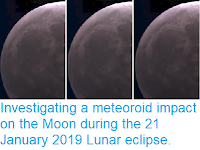The
Earth will reach its aphelion, the furthest point in its orbit from the
Sun, a distance of 152 104 285 km, at 1011 pm GMT on Thursday 4 July
2015. The Earth's orbit is slightly eccentric and slightly variable,
leading to the distance between the Earth and the Sun varying by about
3.4% over time, reaching aphelion early in July each year and perihelion
(the closest point on its orbit to the Sun) early in January. The exact
distance at aphelion and perihelion each year varies, with this year's
aphelion being slightly closer to the Sun than last year's, when the
Earth reached 152 141 035 km from the Sun on 6 July.
The difference between the Earth's perihelion (closest point to the Sun) and aphelion (furthest point from the Sun). Time and Date.
This is counter intuitive to inhabitants of the Earth's Northern
Hemisphere, who often assume that the Earth is closest to the Sun in
midsummer, when in fact it is at its furthest away. This is because the
tilt of the Earth plays a far greater role in our seasons than the
distance from the Sun, and the Northern Hemisphere has just passed its
Summer Solstice, i.e. the point at which the North Pole was pointing as
close to the Sun as it ever gets, so that the Northern Hemisphere is
currently getting much more sunlight than the Southern. The Earth's
surface receives about 7% less sunlight at aphelion to at perihelion,
but this is far less than the seasonal variation caused by the tilt of
the Earth (23% in each hemisphere).
n fact the Earth could potentially move quite a bit in its orbit and
still maintain an equitable climate, possibly even if it was as far out
as Mars (1.5 AU), though presumably this would be somewhat cooler. Mars
is a frozen wasteland largely because it is small and airless. The
Earth, being larger, is able to sustain a thicker gaseous atmosphere,
leading to a greenhouse effect that keeps the planet warm. Probes on the
Red Planet have found abundant geological indicators of running water
on the surface, suggesting that ancient Mars had a thicker atmosphere
which could support liquid water, but this has now gone, the low gravity
of the planet having let it escape molecule by molecule.
See also...
Follow Sciency Thoughts on Facebook.







